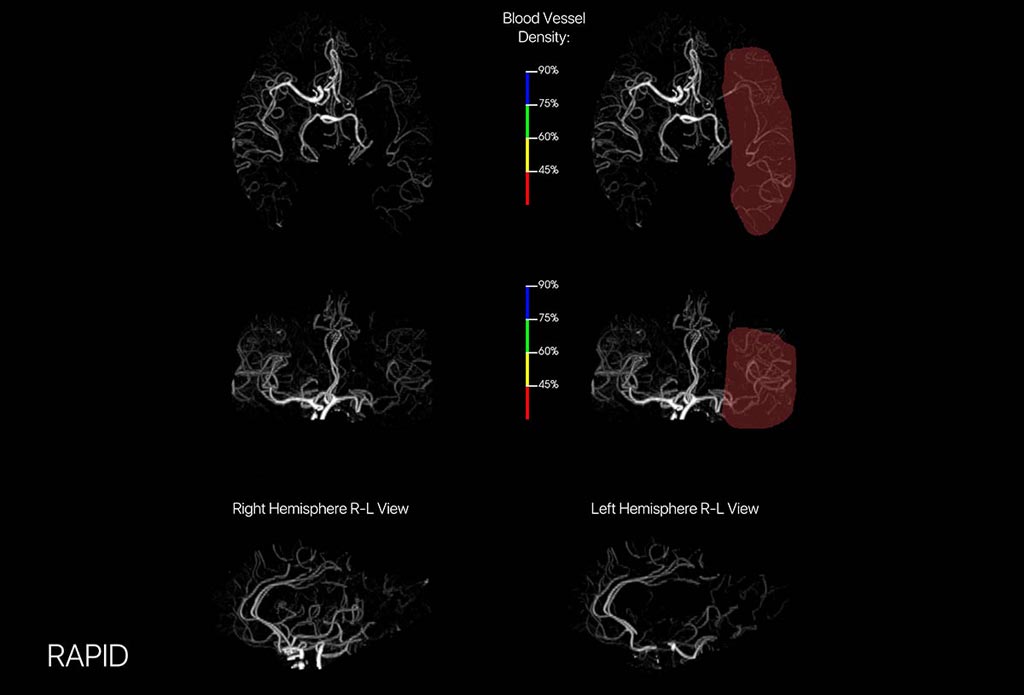3D Neuroimaging Platform Advances CT Angiography
By MedImaging International staff writers
Posted on 21 May 2018
A novel rapid computed tomography angiography (CTA) imaging solution provides colored overlay maps to identify brain regions with reduced blood vessel density.Posted on 21 May 2018
The iSchemaView (Redwood City, CA, USA) RAPID CTA is a three-dimensional (3D) imaging solution designed to provide physicians with fast, fully-automated, and elegant maps that facilitate clinical decision making of cerebrovascular disease (CVD), such as stroke, during neurovascular emergencies. The clear, easy to interpret CTA maps include a colored overlay to identify brain regions with reduced blood vessel density; the severity of reduction can be readily visualized by a simple, four-color-coded scale.

Image: An advanced brain-imaging platform provides optimal CTA Image (Photo courtesy of iSchemaView).
3D reconstruction of the vasculature allows physicians to rotate the image for optimal viewing of the vessels from multiple angles. And to save valuable diagnosis and treatment time, Rapid CTA also offers remote viewing for physicians in the hospital, at home or on the road. Image maps are immediately available to doctors for review on any desktop or mobile device. The resulting collaboration between community hospitals and specialists facilitates patient triage and transfers to specialty centers for extended care by neurointerventionalists.
“The new automated RAPID CTA tool makes it easy for community hospitals to quickly identify potential candidates for treatment and for experts at the comprehensive centers to verify that the patient is appropriate for transfer,” said Professor Greg Albers, MD, director of the Stanford Stroke Center and co-founder of iSchemaView. “Many eligible stroke patients with large vessel occlusions must be quickly transferred to a comprehensive stroke center. Hospitals and clinics of all sizes and locations can now use the platform to immediately review images from wherever they are. That’s powerful.”
“Our goal is to provide healthcare professionals around the world with the most comprehensive and intuitive suite of imaging solutions possible,” said Don Listwin, CEO of iSchemaView. “We ensure physicians can take advantage of RAPID’s power whether they choose plain CT, CT Angiography, CT Perfusion, or MR diffusion and perfusion. It’s all about offering them the right imaging solution choice, for the right patient, at the right time.”
CT angiography uses a CT scanner to produce detailed images of both blood vessels and tissues. An iodine-rich contrast material is usually injected through a small catheter placed in a vein of the arm. A CT scan is then performed while the contrast flows through the blood vessels to the various organs of the body. After scanning, the images are processed and reviewed in different planes and projections.
Related Links:
iSchemaView






 Guided Devices.jpg)







